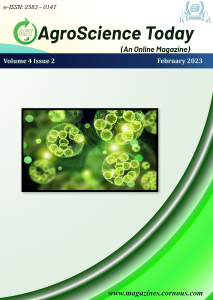Green technology is applied to mitigate the devastation that mankind inflict on the environment. When executed correctly, they will nourish the world’s population and propagate valuable cultivation techniques to the forthcoming generation. Because they lessen environmental harm, produce fewer fossil fuel byproducts, and support the development of sustainable agriculture, green technology is essential for the agricultural industry. Sustainable agriculture depends on renewable energy sources. A natural resource that can replenish itself after being used up is called renewable. There is no end to the renewable resource. Currently, the majority of agricultural equipment uses fossil fuels, which contribute to climate change by releasing greenhouse gas emissions into the environment. If we adopt renewable energy sources and associated technology, we could reduce this environmental harm. Renewable energy and agriculture go well together since these natural resources can be harvested indefinitely. These may provide farmers with a steady stream of income. Microalgae in agriculture are one of the promising green technologies. It can be used for producing biofuels, treating wastewater, reducing pollution, and resource recovery systems. The primary energy source for human activity today is biofuel. The research of microalgae-based biofuel has successfully demonstrated how it is feasible to attain the sustainable growth and clean energy sources. Microalgae-based green technology advancements added value as animal feed and biofertilizer in addition to environmental benefits (Yap et al., 2021).
Larger dependence on synthetic pesticides for storage pest management has led to considerable problems like residues in products, pest resurgence and resistance in insects. A fast, more sensitive and economically feasible method for detection of infestation by seed storage pests is the need of the hour. In this context, few nonchemical methods gain importance as an alternative to chemical fumigants which may have a deleterious effect on the seed quality parameters.
